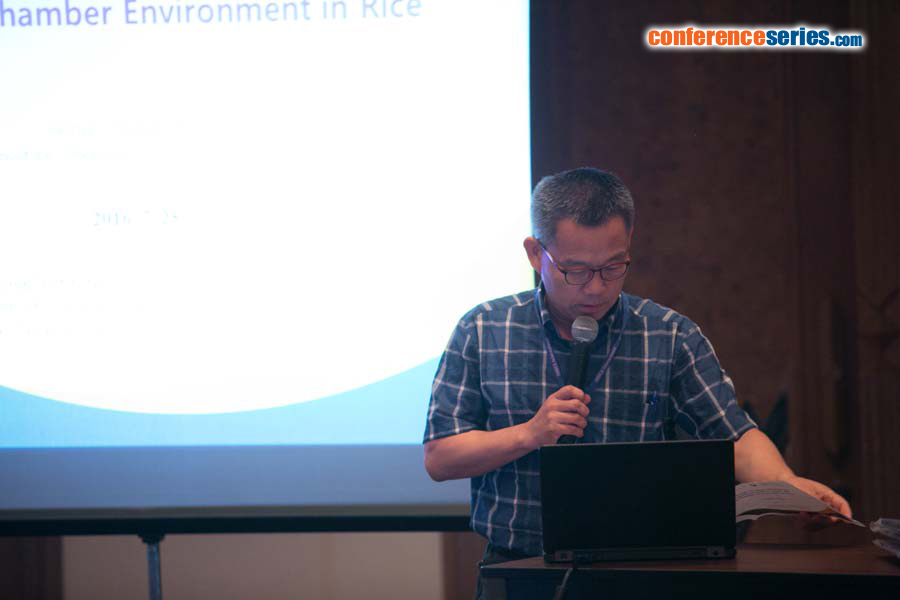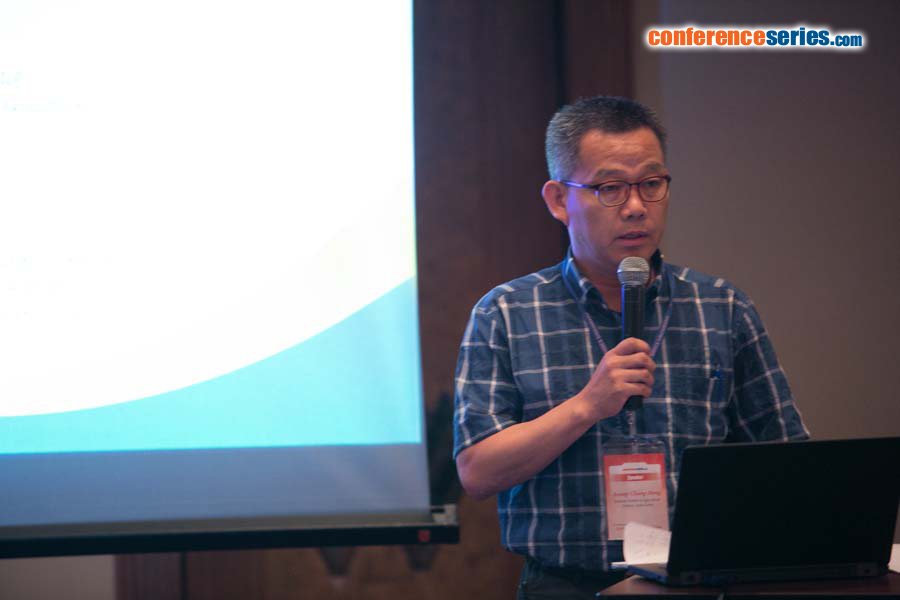
Seung-Chang Hong
National Institute of Agricultural Sciences, Korea
Title: Carbon and nitrogen changes affected by elevated temperature and CO2 under the open top chamber environment in rice paddy
Biography
Biography: Seung-Chang Hong
Abstract
Elevated temperature and CO2 concentration of atmosphere can change the cycle of carbon and nitrogen in rice paddy. To understand the changes of carbon and nitrogen, as an agricultural resource, forced by climate change are important to develop the adapting technology in agricultural sector. The change of carbon and nitrogen were evaluated by elevated temperature and CO2 concentration in rice paddy of South Korea. In order to control the elevated temperature and elevated CO2 concentration, we set up the open top chamber (OTC) facility of 2m(W)×2.5m(H) with three replication and rice seedlings were transplanted inside its plot. The treatments consisted of elevated temperature (ambient+1~3°), elevated temperature plus elevated CO2, and open paddy as a control. Concentrations of TOC, COD and the COD/TOC ratio of flooded surface water (oxidation layer) increased by elevated temperature. On the other hand, the concentrations of TOC, COD, and the COD/TOC ratio of percolating water of soil depth of 50 cm (reduction layer) showed decreasing trend. Furthermore, elevated temperature and CO2 treatment increased the concentration of TOC in surface water. The content of soil T-N and TOC were higher than those of the control. Elevated temperature significantly increased the culm length, culm weight of rice plant but the panicle number, panicle weight of rice did not show significant differences. These results imply that elevated temperature and elevated atmospheric CO2 concentration can increase carbon and nitrogen export from rice paddy. Therefore, the carbon and nitrogen cycle of rice paddy could be changed under future climate change environment.




